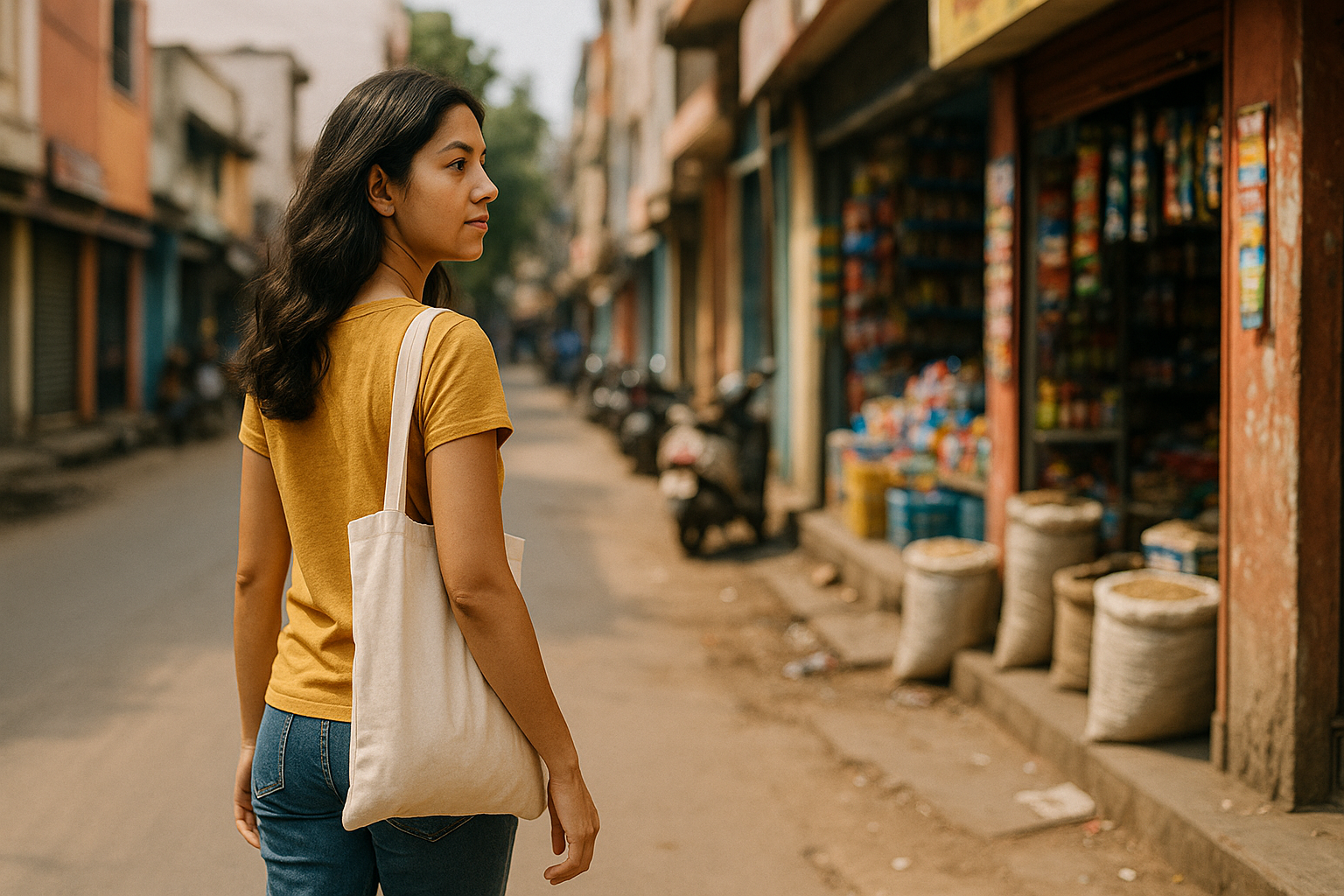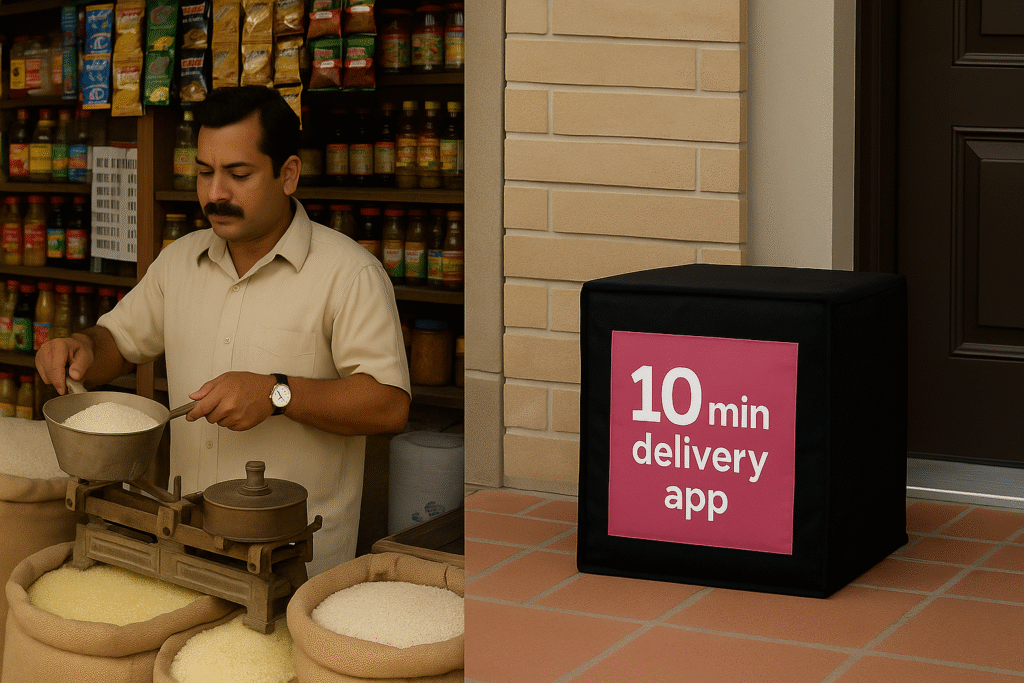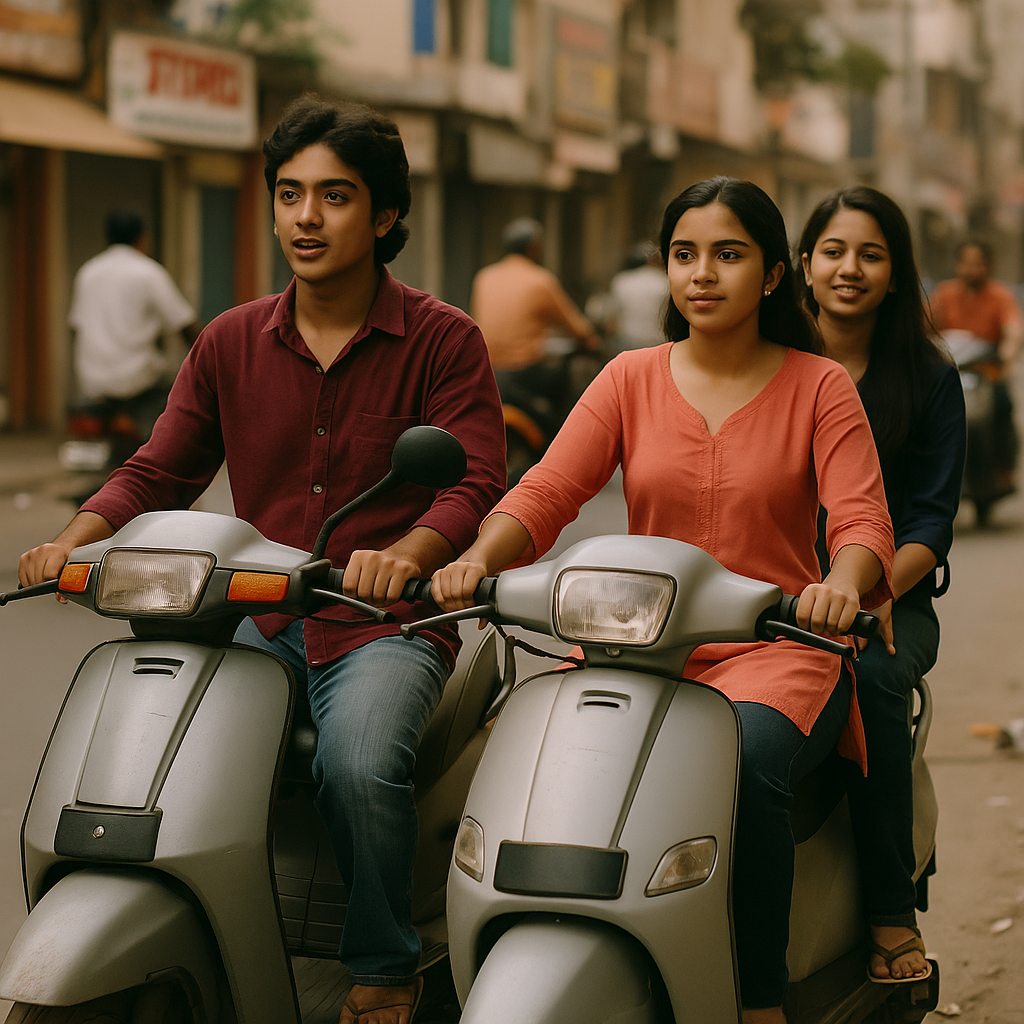The Best Fluffy Pancakes recipe you will fall in love with. Full of tips and tricks to help you make the best pancakes.

A Desi Millennial’s Reflection on Gentle Fitness, Urban Nostalgia, and Choosing to Move
If you grew up in a middle-class South Asian household, movement was never a separate agenda item. You did not “make time” for it. You simply lived it. You ran errands for your mother. You carried packets of milk home. You walked to the local kirana store three times a day because someone always forgot something.
But for many of us millennials living in modern Indian cities, that world has quietly faded.
In a post-pandemic, app-driven world where everything arrives at your door, I have chosen to walk to my kirana store again — deliberately. Not because it is required. But because it is movement I can stick to. And because it is one of the last remaining pieces of continuity in a hometown that no longer looks or feels the same.
Kirana Stores Are Disappearing — And So Is Our Natural Movement
Ten years ago, kirana stores were on every other street. The familiar thump of the weighing scale, the scent of open rice sacks, the glass jars of toffees — they were an everyday sensory experience. But today, apps like Zepto, Blinkit, and Swiggy Instamart have transformed the way we shop.
Convenience has increased. Movement has decreased.
Most of us do not even consider walking to the nearby store anymore. We unlock a phone, tap twice, and wait. No need to step out. No need to move.

We Were the Scooter Generation
Many of us, particularly in urban India, got our first scooters as teenagers. And with that came a new form of distance — not just from physical locations, but from the habit of walking itself.
We stopped walking to school.
We stopped walking to pick up groceries.
We zoomed.
Our bodies became less involved in the everyday rhythms of life.
We never navigated two bus routes like our parents did. We did not carry dripping vegetables in jute bags across lanes. As our urban comfort grew, our physical activity shrank.

Then the Pandemic Sealed the Deal
Whatever small amounts of incidental walking remained — gone.
The lockdowns meant kirana visits turned into health risks. Masked delivery agents became the new normal. The world shut in, and so did our bodies.
The tragedy is not that we adapted. The tragedy is that we never came back from it.
The habits stayed.
The apps stayed.
The walking? It did not.
So Now, I Walk — To Reclaim Something
I live in a place where I still have access to a local kirana shop. And I choose to walk there — even when I do not really need to. Even when ordering online would be easier.
It is not about groceries. It is about presence. It is about feeling grounded. It is about reconnecting with movement that does not feel performative or punishing.
It is also about preserving constance — about keeping one small ritual alive in a world that has changed too quickly, too silently, too often.
Because even if I am still living in my hometown, the hometown of my childhood and the hometown of my thirties feel like different planets.
And the kirana walk? It bridges that gap.
Do I Get My 10,000 Steps This Way?
Sometimes yes.
Sometimes no.
But the better question is — does it help me stay consistent?
Absolutely.
Walking to the kirana may not be a full-blown cardio session, but it breaks the loop of sedentary living. It wakes up the body. It adds natural rhythm to my day. And over time, all those small walks add up.
So maybe I do not hit 10,000 steps daily.
But I no longer hit zero.
And that is already a huge win.
Why I Count This as Movement
1. It Gets Me Out of My Head — Not Just My House
When I walk to the kirana, I am not staring at a screen. I leave my phone behind. I feel the sun, dodge a stray cat, nod at the uncle who always says “beta, barish aayi kya?”
That is regulation. That is therapy. That is health.
2. It Is Not Fitness for Instagram — It Is Fitness for Life
I do not wear activewear. I do not carry a water bottle. I do not track my steps. I just step out because I need haldi or bread or loose change. And that is where movement becomes sustainable — when it blends into routine, instead of becoming one more burden.
3. It Is Soft on My Body — and on My Mind
With hormonal imbalances, thyroid issues, and post-burnout fatigue, my body cannot always handle intense workouts. But walking to the kirana store? That I can do. That builds consistency.
That gently tells my nervous system: “You are moving. You are safe.”
4. It Feels Familiar — and Keeps Me Connected to My Roots
There is something healing about shopping where your mother once did. About picking your own vegetables. About being recognised by a shopkeeper who saw you grow up.
It is not nostalgia — it is continuity. It is belonging.
5. It Supports the Local Economy
Each time I order from an app, I pay a premium — to a middleman. When I buy directly from my local kirana, I am putting my money back into a small business that has likely been serving the neighbourhood for decades.
It is not just good for the body — it is better for the economy.
6. It Saves Me Money in the Long Run
Impulse buys on quick commerce apps are real. Extra snacks, unplanned items, surcharges — they all add up. When I walk to the store, I buy only what I need. And somehow, my budget thanks me for it.
What We Lose When We Stop Walking
We do not just lose movement.
We lose:
- The rhythm of physical independence
- Tiny interactions with strangers
- A grounded sense of place
- Control over how and what we consume
- A link to our past selves
- The quiet pride of showing up for ourselves
Final Thoughts
Our generation inherited scooters early, screen fatigue constantly, and delivery convenience endlessly. We are overstimulated, undernourished, and exhausted. And yet, we still have a choice.
We can bring back the walk.
Because sometimes, it is not about health goals or fitness challenges.
It is about keeping something steady when everything else is shifting.
It is about preserving one ritual that makes you feel like yourself, even when your city, your body, and your timelines do not.
So if you still have a local kirana store nearby — the kind with a handwritten price board and a bell tied to the shutter — walk there.
Even if you do not have to.
Even if it is just for bananas.
Even if it is not efficient.
Because sometimes, walking to the kirana store is not about the steps.
It is about staying rooted.




